大逆転裁判 -成歩堂龍ノ介の冒險-, The Great Ace Attorney Chronicles: Adventures, directed by Shu Takumi, originally released on 3DS in 2015
this isn't even a joke. it's all Edgar Allan Poe's fault.
there are many video games out there that attempt to replicate the feeling of being a detective: searching a scene for clues, interviewing witnesses, making deductions, figuring out the means, motive, and opportunity of the crime, and pointing out the culprit in the end. i often think about this particular video essay by Game Maker's Toolkit asking the question "What Makes a Good Detective Game?" as turns out, it's extremely hard! the essay does praise Ace Attorney for it's method of crime solving: you often already know the culprit so you have to work your way backwards to connect them to the crime, plus convince everyone else in the room that your point is valid.
the most recent games in the series bring the games back in time to the Meji Era ancestors of the classic Ace Attorney characters you know and setting up the world to exist as it does in the modern Ace Attorney era. these two games were original released on 3DS, then on iOS, but in 2021 were rereleased and finally localized on PC, PS4, and Switch. this review will only cover the first of the two games, and will contain spoilers for all cases therein.
this isn't going to be a formal review, i'm barely going to summarize the cases, but instead i kind of just want to talk about the game as it exists, Ace Attorney as a series, the mysteries presented in the game, and the references to other Sherlock Holmes media. i think this game series is one that's best experienced first hand playing it yourself or second hand through a playthrough, and as they are visual novel games, they are easily played by anyone. if i have to recommend a particular playthrough of The Great Ace Atttorney 1, might i suggest this stream series by Lumberjack2on and friends. they voice act the entire game so you can easily consume it while having it on in the background if you can't play it yourself.
this post only is gonna cover the first game, so... be wary of spoilers if you go to the wikia for any more information than i've provided here.
there are slurs for the irish, jewish, and japanese that are in the game. this is the most i will mention them in this post.
it's one of the most Japanese games ever, and we have to make Americans understand it
oh Ace Attorney, the games which have had some of the most turbulent localizations of any video game series i have ever known. i was recently considering how Ace Attorney is probably one of the last few game series currently still active that has dealt with a problem that plagued early anime and video game localizations: how do we make this understandable to an audience that is unfamiliar with Japanese culture? well, the answer posed by the first lead localizer for the series was to just... not deal with it and rewrite most of it. Ace Attorney notably have many characters who's names are puns, there's many cases that allude to very significant parts of Japanese spiritualism, lot of moments where they showcase very unique forms of Japanese art, and much much more. according to the interview with Alex Smith, they straight up rewrote a lot of the scenes to suit English dialogue better while doing their best to maintain the general idea of the original Japanese jokes. to be fair, i feel like the localization teams did EXTREMELY well with localizing these games, which thank god because these are at their core visual novels. to the localization team's credit, they probably helped popularize the visual novel genre in the United States based on the popularity of these games alone. visual novels have seen a surge in popularity in non-Japanese speaking audiences since the early mid 2000s since these games started releasing in English.
The Great Ace Attorney Chronicles games also very specifically had some difficulties in being localized, and i do recommend reading the interview conducted by Siliconera with the localization director Janet Hsu about the lengths they went to preserve the feel of the game.
i'm most familiar with the first four games in the series, having skipped over some of the 3DS titles but i do eventually want to play/consume playthroughs of them eventually. holding my reservations for the Miles Edgeworth investigation games because people universally say they're not as good.
anyway, The Great Ace Attorney follows Ryunosuke Naruhodo, the ancestor of Phoenix Wright (Ryuichi Naruhodo is Wright's name in Japanese). he's joined by Kazuma Asogi and Susato Mikotoba, then later Herlock Sholmes and Iris Wilson in performing the duties of a lawyer as the occupation has finally been officially adopted in conjunction with the supreme court within Japanese law.
an important note before we get into it
another aspect of this game that can be debated about whether it's good or bad in it's inclusion is, of course, the racism and sexism. very notably the racism. due to the initial pass in in bringing the game to English speaking audiences, a team of fans known as Scarlet Study worked to translate the TGAA games into English. they even made patches of the 3DS versions of the game in order to play them translated on original hardware. one thing that many fans consuming this game noted is that the game is FRAUGHT with racism and misogynistic tones. i have not consumed the Scarlet Study translation myself, but according to what people have said about it, they did not hold back on attempting to maintain how severe some of the bigotry that's found in that game can be.
the official translation of the games published in 2021 still contain a fair amount of bigotry to be honest, especially from the white British characters aimed at Naruhodo and his friends for being Japanese. having gone through TGAA1 myself, i can say it how it's been translated maintains the alienating racism, but it definitely feels like it's definitely holding back on trying to go for the "period accurate" approach. while it can be certainly jarring to hear Van Zieks call Naruhodo his "learned Nipponese friend" like ever 5 minutes i prefer that to whatever else could be "accurately" inserted into that same sentence by a scary British man.
the cases themselves
case 1: The Adventure of the Great Departure
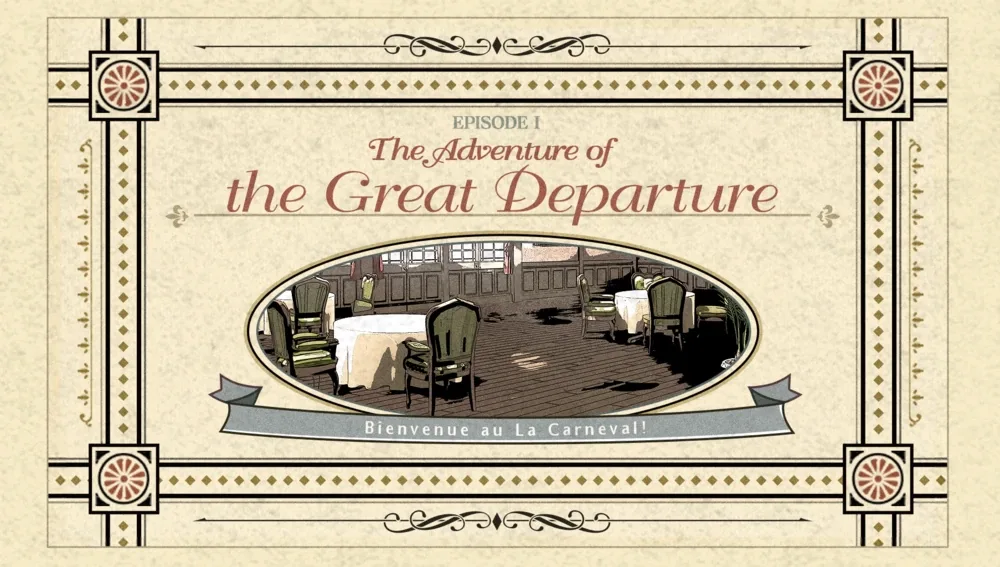
this is Naruhodo's first case as a lawyer and it's a little sussy that Mikotoba basically tricked Naruhodo into doing self representation. i've got my fucking eyes on you Mikotoba sr.
John H. Wilson is obviously a reference to John Watson, made even more obvious by the H in the name, as Watson's canonical middle name is Hamish. Jezaille Brett, a witness that appears in the case is, at least in my mind, a reference to Jeremy Brett, my personal favorite actor that has portrayed Holmes. also the swan on Brett's hat i'm pretty sure are supposed to make her look as British as possible because all swans in England and Wales are "owned" by the Queen. sure.
this case is a little rough in the racism department as everyone is throwing themselves at the feet of Brett in order to appease her while she constantly talks down the Japanese characters around her. that bit sucks.
something about this case that also irks me is the thing about this case is the """"Poison is a woman's weapon"""" bit. this game is not the first nor the last piece of media to perpetuate this idea. the 1945 Basil Rathbone Holmes movie "Pursuit to Algiers" even apparently referenced this idea as well. however, it's a decidedly false notion that women are more often poisoners than men. i found a really interesting paper written about the subject, however the paper has quite a bit of triggering historic sexism in my opinion that it was hard to even get through the introduction. you're not missing much by reading all of it other than the take away was that while poison appeared to be the murder weapon of choice for the Victorian woman, it was often attributed due to more of available circumstance (women and mothers would prepare meals for example) than it was anything else.
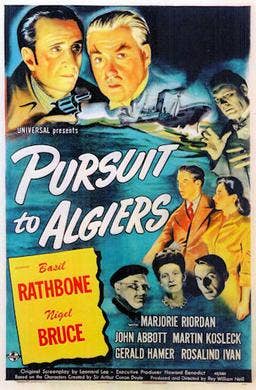 theatrical poster for "Pursuit to Algiers".
theatrical poster for "Pursuit to Algiers".
anyway, the information presented about Curare is fairly accurate. it was a hunting method of choice by people from South America, only affecting the victims via injection as opposed to ingestion. i THINK the use of Curare is supposed to be a reference to the Sign of Four, which is how Tonga killed his victims in that story. however, Tonga was supposed to be Andamanese, which is a people from an island off the coast of India, and not South America. but yknow... "blow dart savages" and... racism. anyway, moving on to the next case.
case 2: The Adventure of the Unbreakable Speckled Band
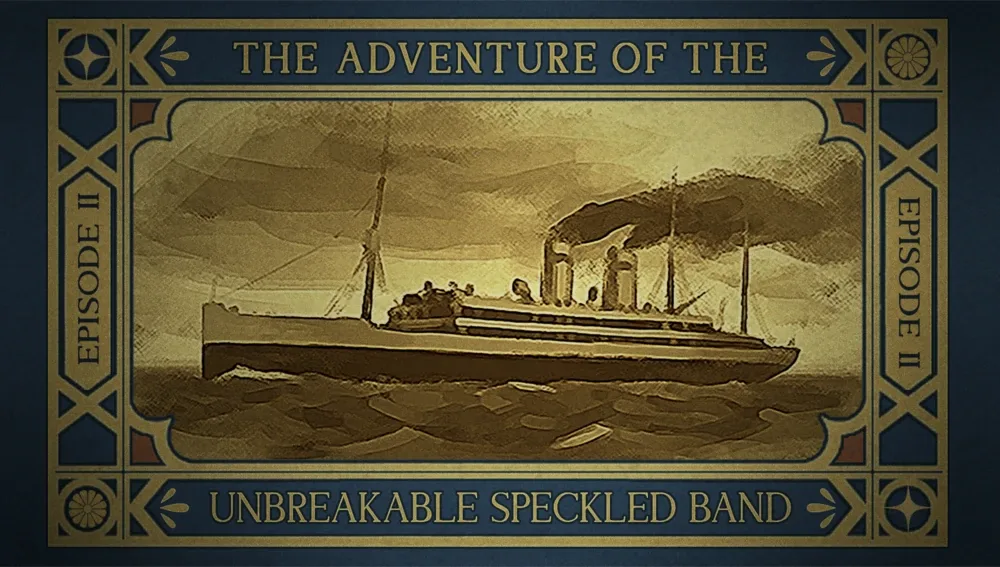 Naruhodo is a stowaway on a boat! dude that sucks. also, Herlock Sholmes is here.
Naruhodo is a stowaway on a boat! dude that sucks. also, Herlock Sholmes is here.
the name and murder in this case is obviously referencing The Speckled Band, a story that i've talked about here before but in play form.
this case is more or less a direct adaptation of The Specked Band, save for the intentional malice of murder. there's a vent and there's a snake. there's also a Grimsby Roylott! Grimsby Roylott is the alias ms. Pavlova takes on when she's pretending to be a man, which is the name of the culprit in The Speckled Band. that makes consuming this case really interesting already having that knowledge and it feels very classic Ace Attorney knowing the culprit before the actual "court gameplay" begins.
this case also introduces Herlock Sholmes, the man himself, my fuckign scrimboblimbo, i love that man. Sholmes is named as such in English due to the historically terrible copyright debacles caused by the Conan Doyle Estate. Sholmes makes some incorrect deductions about Naruhodo when they are introduced, all of which are directly referencing the deductions that Holmes makes about Watson when they first meet in Study in Scarlet. i think it's silly and cute.
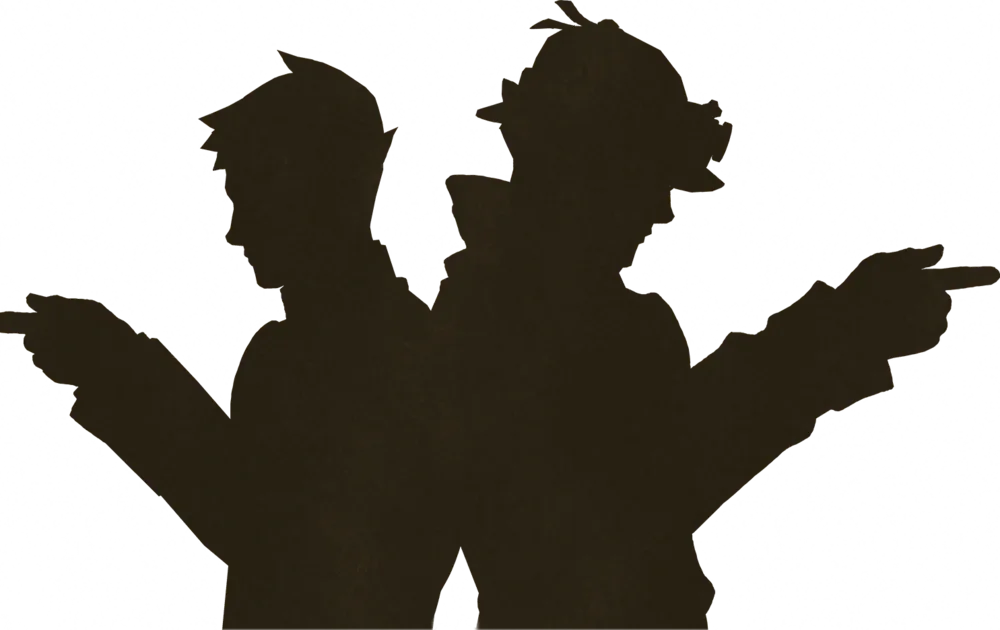 the dance of deduction silhouettes.
the dance of deduction silhouettes.
Sholmes also brings is the "Dance of Deduction" gameplay element, which according to interviews was the demo that Takumi brought to Capcom higher ups in order to pitch the game. i do agree that i think it's one of the most defining aspects of the game and would help to give the overall feel of the game. in this mechanic, Sholmes makes a deduction based on what he sees and then it's Naruhodo's job to reroute him and correct his deduction. i think this mechanic is really strong because it does help you feel like you're making the deductions outside of the courtroom setting! it's a bit of "leading the witness" but when you already know where to look, it makes it much easier to look for the correct information to deduce. especially in the context of the game, you are often rotating around the scene or examining 3D models, much like turning over evidence and examining it for clues. it's a lot of fun!
the case still ends with Asogi dead though, so rip to that guy. i wonder if we'll hear from Pavlova again or if that was a one off thing.
case 3: The Adventure of the Runaway Room
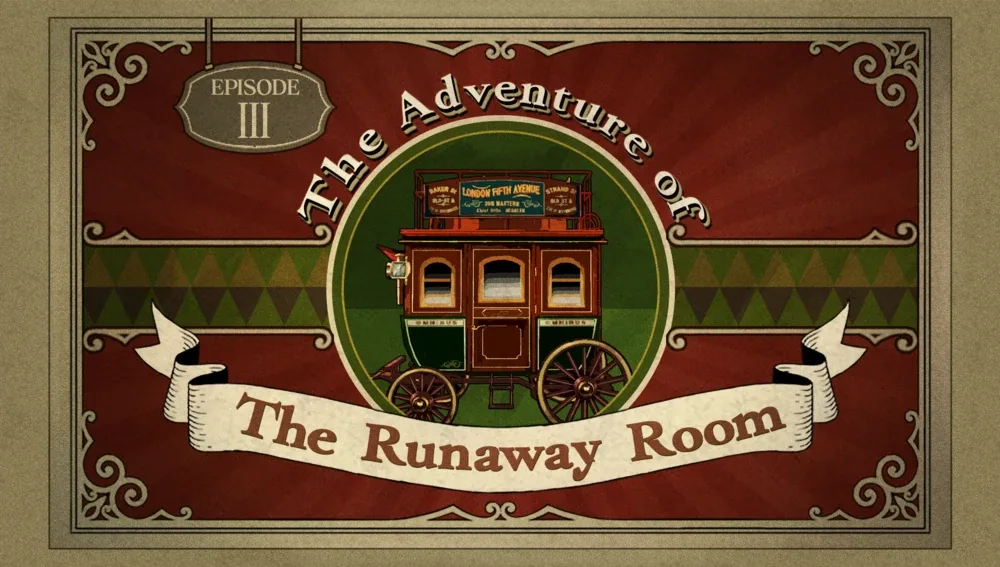
Naruhodo and Susato are in London now! wow! oh jeez we're in the racism now guys.
One of the most notable references in this case is the character of Gina Lestrade. Inspector G. Lestrade is probably the one Scotland Yard inspector that anyone with a passing knowledge of Sherlock Holmes canon would know. this is for a good reason too, he was in 13 of the original canon series, putting him ahead of the next most featured inspectors by 9 stories. such a distinct name too, you're unlikely to forget it. i think it is pretty interesting that TGAA's Lestrade is made into a pickpocket/street urchin, very fun take on the character. from this alone, there is a bit of anticipation she'll turn her life of crime around which is fun to consider.
This case introduces the true British court as well as the jury mechanic, wherein rather than trying to prove innocence of your client to just the judge, you now have to convince a jury of six "strangers" of the innocence of your client. i think that this new court mechanic is MASTERFULLY introduced in the context of this case.
the case starts out with the rushed introduction of your client, Magnus McGilded, whom like any other Ace Attorney game, you trust implicitly and believe to be innocent. even if he's a little weird. and Irish. the jury and Van Zieks are against you and you do your best to turn their opinion around. their positions do slowly change as you learn how the jury mechanic works and as you advance through the evidence of the case. however through the developments of the case, it becomes clear that McGilded is not innocent at all and there is actually a very very good possibility he committed this murder. however, by the point you and Ryunosuke realize this, it's already too late to change the opinion of the jury and McGilded is declared innocent, much to the dismay of Ryunosuke and Van Zieks.
i think that this is a really strong "first case" in that it introduces how different the British court system is from the Japanese one we were introduced to in the actual first case and in the classic Ace Attorney system we know. it also shows how flimsy the system of justice and law can be, how easy it is to corrupt it, how easy evidence can be manipulated, and how appealing to the jury on emotional weight alone can shift the case. it's so... different! and interesting!
also uhhh Mael Stronghart is definitely the ancestor of Damon Gant and that does make Stronghart sus already from knowing how Damon Gant was, but... i also just liked Damon Gant's character a lot even if he was a corrupted bastard.
case 4: The Adventure of the Clouded Kokoro
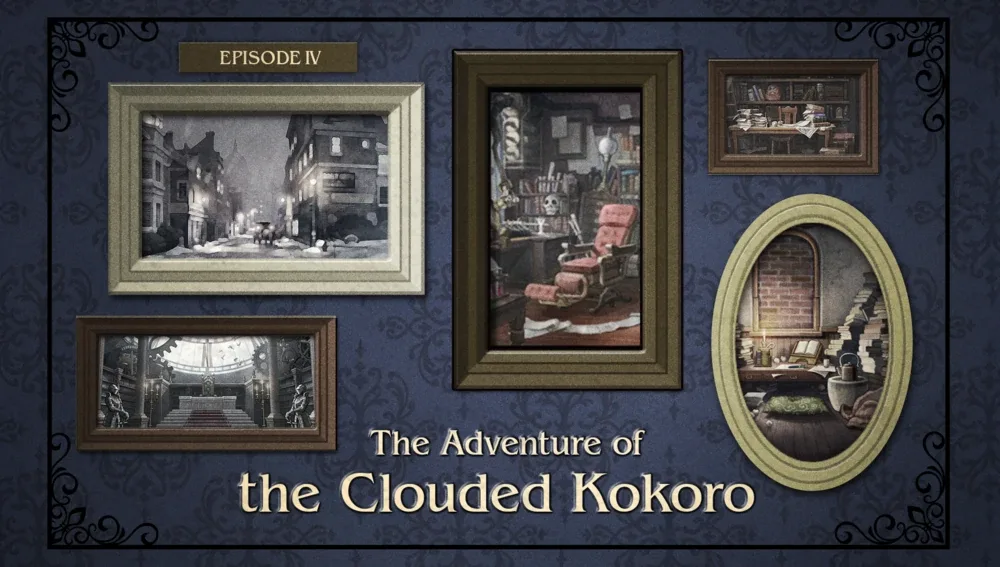
Oh this case has so much in it.
Soseki Natsume was just a real person. according to Shu Takumi, he contacted the living relatives/descendants of the Natsume family and they said he could do whatever he wanted with the character. which rules.
the inspector fully introduced in the case is Tobias Gregson, the second most mentioned/present Scotland Yard Inspector in Sherlock Holmes canon. Gregson in the original canon is introduced in Study in Scarlet alongside Lestrade. Together they are supposed to be polar opposites of each other, with Gregson smarter, more accepting of Holmes' methods... and more lenient about Holmes committing minor crimes in order to solve the mystery. i think it's appropriate then that this trend continues with Ace Attorney Gregson and Lestrade being on opposite sites of the law.
John Garrideb is a reference to the story "The Adventure of the Three Garridebs" which is one of my favorites. it's where the following quote comes from:
It was worth a wound, it was worth many wounds, to know the depth of loyalty and love which lay behind that cold mask.
the dance of deduction Sholmes makes while in the Garrideb flat is a reference to the story "The Adventure of the Veiled Lodger". this one is a bit of a more somber as it involves a woman who lost her lover during a lion attack. now that i think about it... there is another Ace Attorney story involving a lion attack too.......... hm.......
additionally, the book that Olive Green picks up that leads to her getting stabbed is "The Adventure of the Lion's Pride", which is a reference to "The Adventure of the Lion's Mane" short story. in fact the Japanese version just uses the latter's title. this is probably an effect of how how the Lion's Mane story is still one of the stories under Conan Doyle Estate copyright, as it was published in 1926. (the stories still under copyright are the ones published after 1923).
case 5: The Adventure of the Unspeakable Story
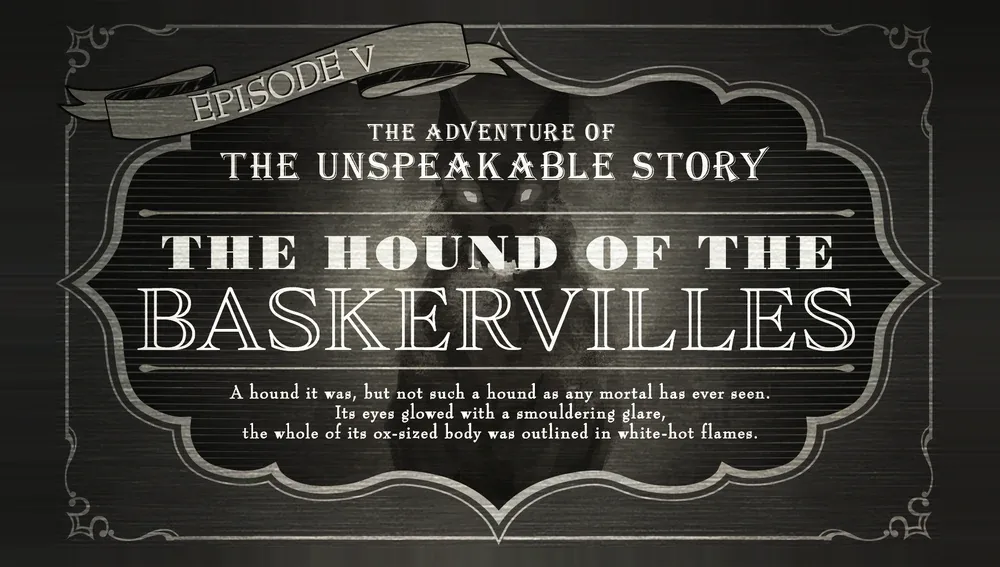
this is the last case in this game and there's quite... a lot to it.
this case probably makes it most obvious that this game was originally on 3DS due to the inclusion of the stereoscopy elements. as i was watching this game be played, and especially the PC version of the game, i couldn't "experience" these effects and when they were brought up. i do think it was interesting in how it was used in the case to convey differences in the crime scene, rather than just as the gimmick it was initially presented as.
 it would be really easy to see that the box in the lower right was moved if the images were overlaid each other.
it would be really easy to see that the box in the lower right was moved if the images were overlaid each other.
one of the floating elements of this case is that Iris has written a draft of "Hound of the Baskervilles". this is obviously referencing the Holmes novel of the same name, and a personal favorite story of mine. in this story, Watson leads most of the investigation only to meet up with Holmes later once most of the clues have been gathered.
Pop Windibank's name is a reference to a character from "A Case of Identity", a story i've written about before. however he bears no character resemblance to the Windibank in that case. his appearance was apparently requested by Takumi to resemble Jabez Wilson as portrayed by Roger Hammond in the Granada TV series adaptation of "The Red-Headed League". Jabez Wilson is also a pawnbroker in that story. in addition to this, Sholmes' Dance of Deduction that is performed in the pawn shop roughly follows the plot of the same story.
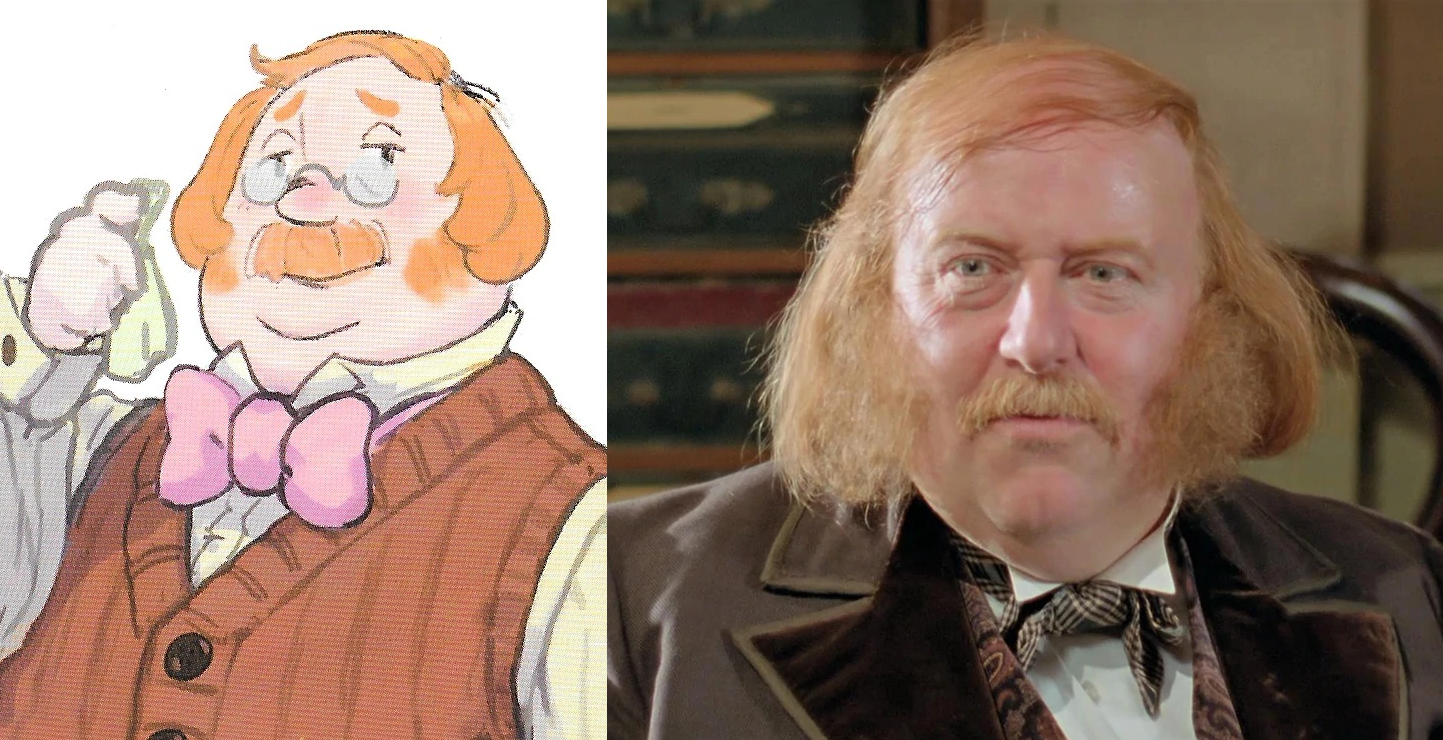 Pop Windibank art compared to Jabez Wilson.
Pop Windibank art compared to Jabez Wilson.
Graydon's use of the pass phrase "PROFESSOR" is probably a reference to Professor Moriarty, as his appearance is probably meant to invoke the similarly sinister presence in this story. On top of that, he and the presence of the Skulkin brothers is likely a reference to the portrayal of Moriarty in the Sherlock Hound anime. in Sherlock Hound, Moriarty is depicted in a white top hat, suit, and cape, and is accompanied by two henchmen, one very lanky and one very short.
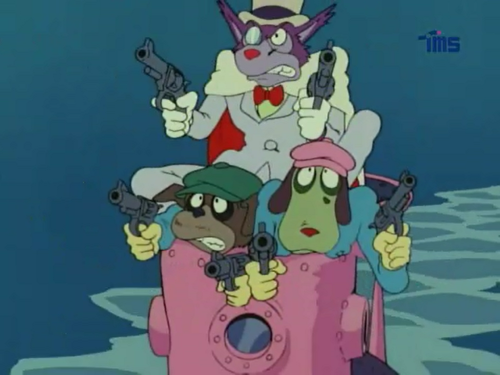 Professor Moriarty, Smiley, and George/Todd in Sherlock Hound...
Professor Moriarty, Smiley, and George/Todd in Sherlock Hound...
 ... and comparatively the appearances of Graydon, Ringo, and Nash.
... and comparatively the appearances of Graydon, Ringo, and Nash.
(i think the connection to Sherlock Hound can be more or less confirmed by this 2015 April fools art with the main cast being depicted as characters in Sherlock Hound, with Sholmes just straight up represented as the titular Sherlock Hound.)
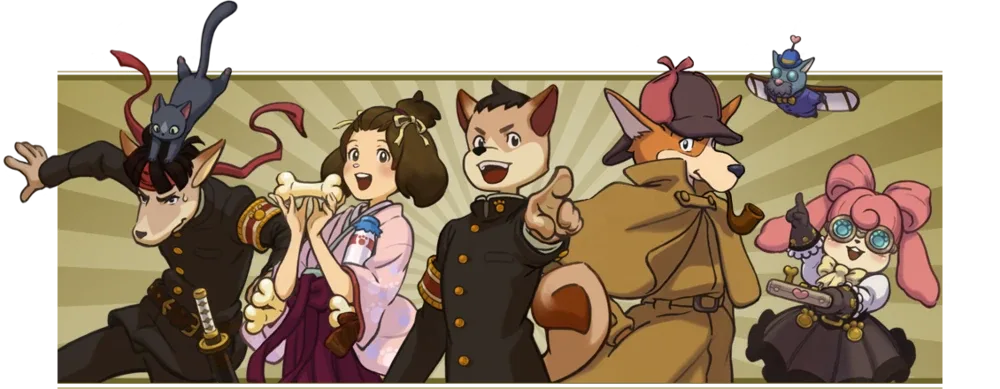 The main cast as doggies!
The main cast as doggies!
in this case "Thrice-Fired" Mason's full name is revealed to be Mason Milverton, which is a reference to the character Charles Augustus Milverton, the master blackmailer from the original canon, who in turn is reference to a real art dealer and blackmailer, Charles Augustus Howell.
the use of the music boxes as the macguffin in this case is probably a reference to "Dressed to Kill", the 1946 movie with Basil Rathbone as Holmes. it's got a few unique elements but is mostly based off of "The Adventure of the Six Napoleons" and "A Scandal in Bohemia". in this movie, a criminal hides the location to currency printing plates within the notes of three music boxes. the notes that play differently in each of the music boxes convey the message when combined together.
at the end of the case, the message conveyed by that music box comes to light, as it was written in Japanese Morse Code. the message reads four names and says "That is all four". this is likely a reference to The Sign of the Four again. while it's a lot more subtle and somewhat ancillary considering that this case as a whole follows the classic Ace Attorney format in that a case that was presented earlier is revealed to contain more information and depth, the Sign of Four reference also does this in that the first and last case are connected by one. as i said, i have not consumed any of the second game so i cannot speak to what any of this means, but in the canonical Sign of Four, the "Four" were are group of people that conspired to steal a bunch of treasure together, then betrayed and killed each other over that fact. when put into the context of this game, that doesn't really bode well for the people named on that list huh.
conclusion
so... i think i really liked this game. it's narrative and cases are really strong, plus it really made for an enjoyable experience for someone like me who was able to recognize a lot of the references to the original canon and other related media. i think it's still a thoroughly enjoyable game even when you don't know the extra information, since this game was really well written as is! you don't need to be a Sherlock Holmes freak to like this game, but it helps.
i think it's fun that Takumi got to make his Sherlock Holmes fanfiction AU game. it's something that every creative does at some point: just steal the names and slightly similar scenarios for a completely new story. it's not an "Alternate Universe" per se in the fandom usage of the word today, but just a reinterpretation/re-appropriation of the text. you see this happen a lot with people rewriting Greek/Roman myths in a modern context. with how "mythologized" Sherlock Holmes as become since his original publication, it's easy to see how he would create a similar effect.
oh, i should explain that meme i made for this post as a whole, huh. well, Edgar Allan Poe is often considered as the father of the Western crime fiction genre. he created the character "C. Auguste Dupin" who was not a professional detective, but a character that employed creative deduction and imagining himself in the shoes of the criminal in order to solve his mysteries. "Dupin" as the name for the character could've been inspired by the word "dupe", something that the detective does in the story "The Purloined Letter".
ACD is inspired by Poe, and in fact even references Dupin in "A Study in Scarlet" where Watson compares Holmes to Dupin and Holmes replies:
No doubt you think you are complimenting me ... In my opinion, Dupin was a very inferior fellow... He had some analytical genius, no doubt; but he was by no means such a phenomenon as Poe appears to imagine.
Edgar Allan Poe also inspires the works of Tarō Hirai, better known as Edogawa Ranpo. His pen name is even supposed to be a reference to Poe's name. Ranpo was both inspired by Poe and ACD, the latter of whose works he attempted to translate into Japanese when he was in college. Ranpo is responsible for creating the character Kogoro Akechi and subsequently becoming the father of the Japanese crime fiction genre.
And then in 2000, Shu Takumi given free reign to make whatever game he wanted, decided to take inspiration from Ranpo's short story "The Psychological Test" in which the criminal's own contradictory testimony is used to unravel the crime. After Takumi's work on Professor Layton vs. Phoenix Wright: Ace Attorney, he was asked to make another Ace Attorney game and so he combined the desire to make a Sherlock Holmes game and to make a game set in London.
and so, in a perfect storm of events, a video game where a character named Herlock Sholmes exists in an Ace Attorney game.
needless to say, i'm really excited to see where the story continues in the next game and see what other kinds of references get made.
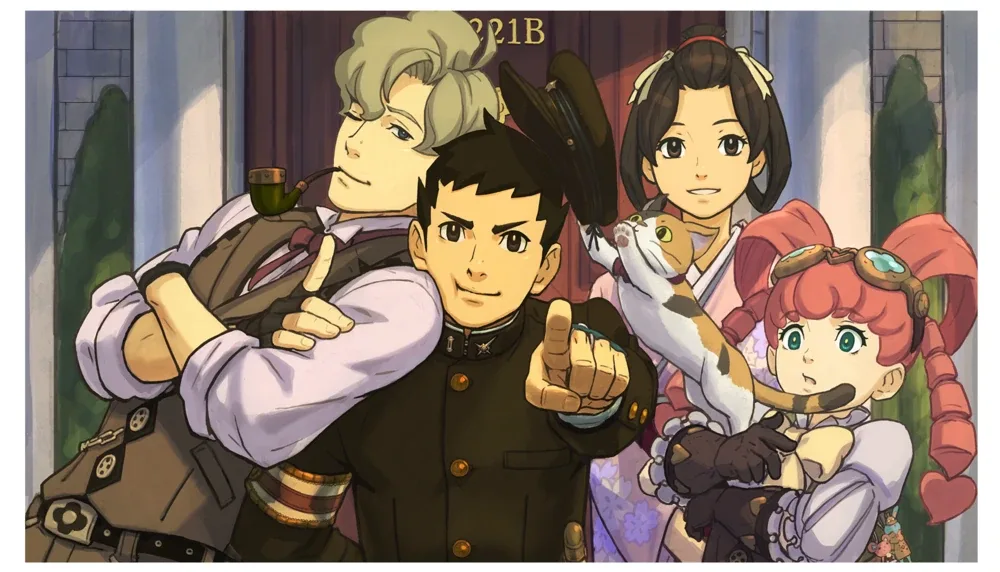 a nice final image!
a nice final image!